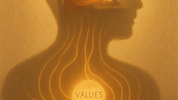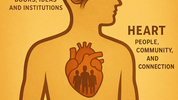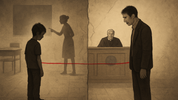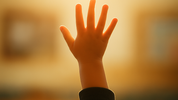The Forgotten Lesson
What if the greatest myth of modern education isn’t about what we teach, but what we believe about the learner?
From our first day at school, we’re told education is about filling minds — that we arrive as blank slates waiting for knowledge to be poured in by someone wiser.
But what if we never were empty at all?
What if, instead, we’ve spent a lifetime trying to remember what was already within us?
The Myth of the Empty Vessel
Children do not arrive as blank slates.
They come into the world with innate curiosity, creativity, and emotion — their own wisdom quietly waiting to unfold.
Even before words, infants communicate through presence and energy. They are learning beings, not empty containers.
Yet much of modern education still operates as if learning is a one-way flow:
Teacher → Student, Authority → Subject, Government → Citizen.
This model produces efficiency but often at the expense of humanity.
Pioneers like Maria Montessori and Rudolf Steiner (founder of the Waldorf education movement) challenged this very assumption. They recognised that every child carries an inner life and unique rhythm of development that must be respected, not standardised. Montessori wrote that “education is a natural process carried out by the child,” while Steiner saw education as “an art of awakening what already lives within.”
Other visionary approaches, such as Reggio Emilia, Sudbury Valley, and Unschooling (which have no single authoritative institution, but operate through regional cooperatives and online forums like Baltimore Unschooling Coop), also share this belief.
- Reggio Emilia views the environment as the “third teacher,” inviting children to express understanding through art, play, music, and storytelling.
- Sudbury schools practise democratic, self-directed learning where students of all ages share equal decision-making power.
- Unschooling extends this philosophy into everyday life, trusting curiosity and lived experience as the true curriculum.
Across all these models runs a single thread: respect for the learner as a capable, conscious being who grows best in freedom, relationship, and love.
Take a moment and ask yourself:
🧠 What does “learning” mean to me personally?
💓 When I ask my Heart what “learning” means, does the answer change?
🦋 When I ask my Gut — my instinct — what “learning” means, is it the same as what my Head and Heart say? If not, what might those differences reveal?
The Hidden Cost of Conditioning
When systems are built around obedience and reward, we unconsciously internalise powerful messages:
- Mistakes are bad.
- Approval equals worth.
- Questioning authority is risky.
These beliefs don’t just shape classrooms — they shape societies.
As we explored last week, the invisible curriculum is the unspoken lesson that teaches us how to belong.
And in doing so, it often confines us to Richard Barrett’s Level 1 (Survival) and Level 2 (Relationship) consciousness — where fear and approval determine behaviour.
Have you ever noticed how early you learned to please, to perform, or to hide your truth just to stay “safe”?
Understanding this conditioning is the first step to healing it. Because once we see the lesson beneath the lesson, and appreciate that our beliefs can limit our growth, we can begin to teach ourselves anew.
- What beliefs about learning are you ready to question today?
- What is one belief you hold about learning that you might now re-examine?
Reframing the Teacher–Student Relationship
Understanding the hidden cost of conditioning is the first step toward reframing how we view learning and teaching.
What would happen if we began to see learning as a shared journey rather than a one-way transfer of knowledge?
What if every classroom, organisation, and nation embraced the truth that teaching is reciprocal — that everyone, regardless of age or authority, carries wisdom to share?
- Children teach creativity.
- Elders teach perspective.
- AI teaches possibility.
- Humans teach purpose.
In Education
- Steiner spoke of education as a living organism growing in harmony with the soul’s evolution.
- Montessori saw the adult as “a guide, not a judge.”
- Reggio Emilia adds the community as a co-learner.
- Sudbury and Unschooling remind us that curiosity itself is the compass.
Together, they invite us to re-humanise education, to restore learning as a deeply human act of connection, meaning, and love.
A Turning Point: Evidence the System Itself Feels the Strain
This isn’t just philosophy; the call for re-humanising education is now appearing in official reviews and policy conversations.
- In the UK, the House of Lords Education for 11–16 Year Olds Committee (2023) concluded that England’s system “requires improvement,” warning that excessive focus on examinations and economic outcomes is “failing to prepare young people for life, work and citizenship in a complex world.”
- Similarly, Scotland’s Independent Review of Qualifications and Assessment (2023) — aptly titled “It’s Our Future” — called for a new model centred on “trust, equity, creativity and learner agency.”
Both reports echo the same principle: education must once again serve the development of whole human beings, not merely the metrics of productivity.
They represent a growing societal awareness that systems built for efficiency cannot sustain human flourishing.
What Does “Humanising Education” Mean?
To humanise education is to move beyond systems that prioritise productivity, standardisation, and technical skill acquisition, and to re-centre education around what makes us most human: curiosity, empathy, creativity, and moral imagination.
It means designing learning environments where individuals feel seen, valued, and safe, and where the purpose of education is not to create workers but to nurture whole human beings.
This is not a nostalgic ideal but a vital transformation for the 21st century.
In an AI-fuelled world where machines can store and retrieve information faster than we can, the role of human learning must evolve, from memorising facts to cultivating wisdom, discernment, and compassion.
When education is re-humanised:
- Curiosity replaces compliance.
- Dialogue replaces instruction.
And, Learning becomes an act of love.
A Thought Experiment — Reimagining the First Lesson
Imagine if the first question every child heard at school wasn’t “What do you want to be when you grow up?” but rather:
“What do you love to learn about — and how can we help you explore it?”
Or if every adult workplace began its week with:
“What can we learn from each other today?”
Such simple shifts change the energy from compliance to connection.
They turn learning into an act of shared awareness, not accumulation.
Reflective Invitation: Exploring Your Beliefs About Learning
Take a moment to explore these questions with your Head, Heart, and Gut — not to find quick answers, but to notice what arises:
- When did you first start believing that learning meant “getting it right”?
- What invisible lessons did you absorb at school or in early life, and are they still serving you now?
- What could your younger self teach you today, if you listened with curiosity instead of judgement?
- How might your life, your confidence, creativity, and relationships be different if your education had been more humanised? i.e., where education built strong relational connections between teachers and students, and educators genuinely cared for both students' well-being and achievement as mentors.
- If you could redesign education for the next generation, what would you make sure they never forget about being human?
- What happens when you ask your Head, Heart, and Gut what learning really means — and what each says we’ve forgotten?
Try this:
- Take five minutes to pause and gently reflect upon your past week, and write down one thing you’ve learned from someone younger.
- How did it make you feel, and what did it teach you about the kind of learning the world now needs?
Closing Thought
The myth of the empty vessel was never about children — it was about our collective amnesia.
We forgot that every human being arrives whole, carrying wisdom that unfolds through relationship, not instruction.
To re-humanise education is to remember that learning is not a process of programming minds but of awakening hearts.
It means creating systems where curiosity, empathy, and imagination are not “soft skills” but sacred ones — the very essence of human evolution.
Because the world no longer needs humans to store information;
It needs humans to embody wisdom.
To remember this is to return learning to love.
Because in The Classroom of Humanity, we are all both teacher and student — and life itself is the lifelong lesson plan.
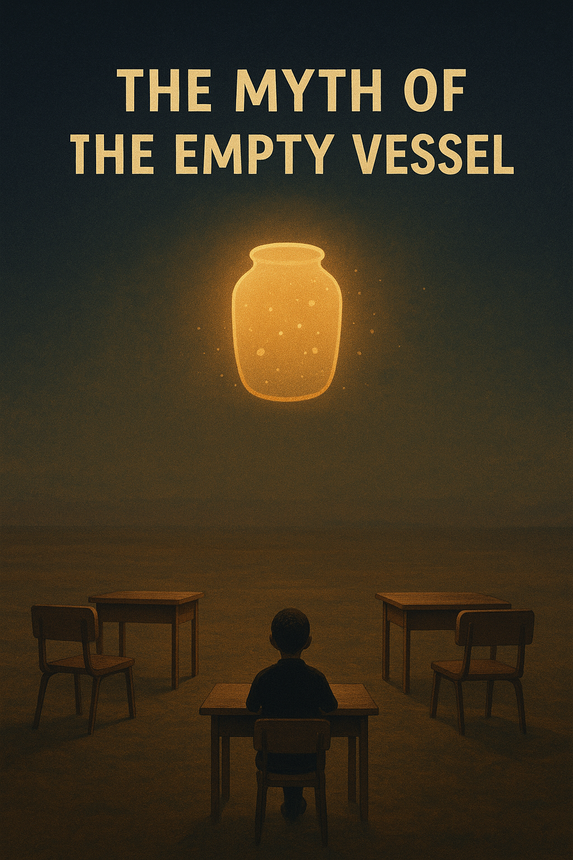 unknownx500
unknownx500


